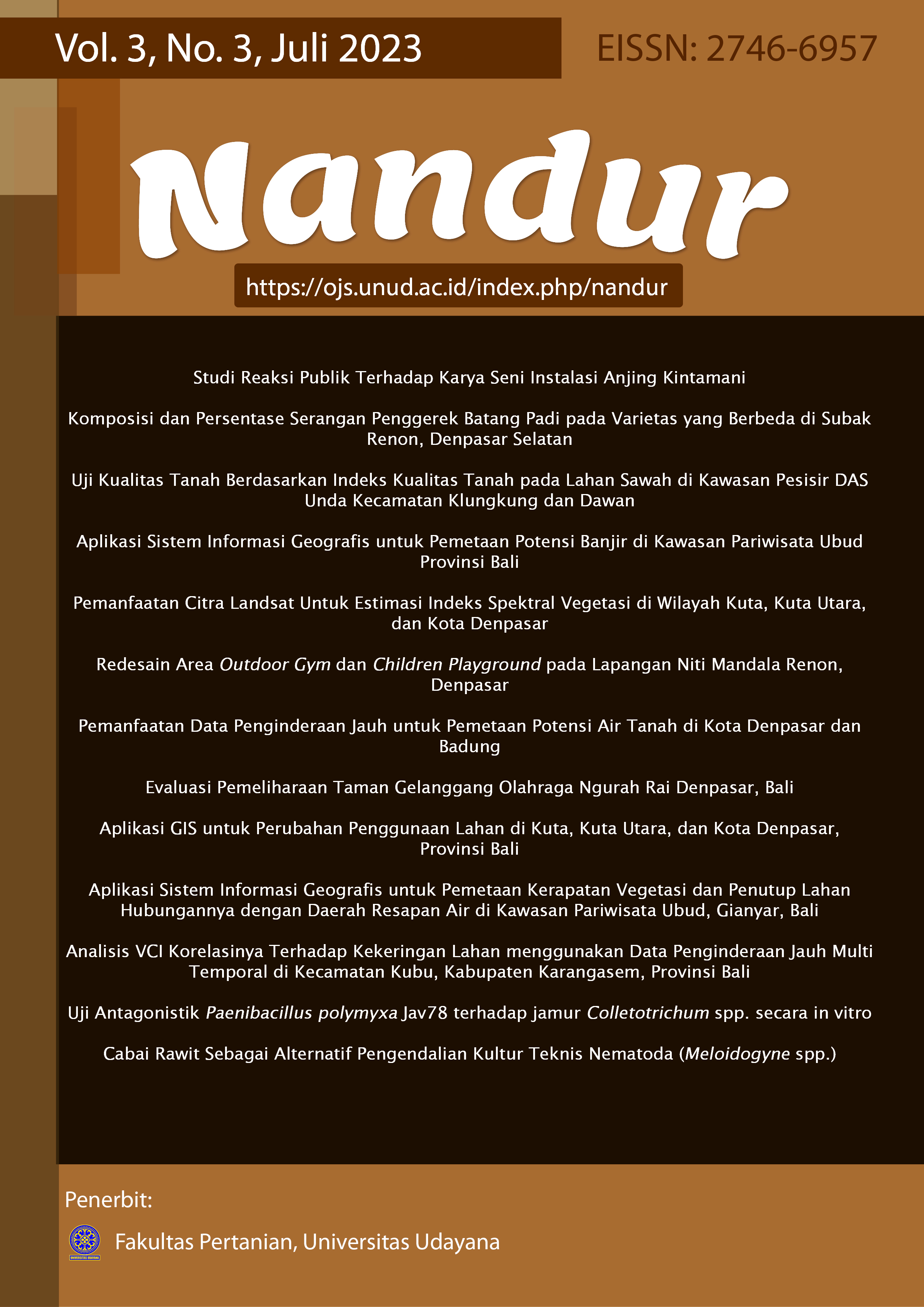Cabai Rawit Sebagai Alternatif Pengendalian Kultur Teknis Nematoda (Meloidogyne spp.)
Abstract
Nematodes (Meloidogyne spp.) cause a lot of losses to farmers cultivating Solanaceae family plants because Solanaceae family plants are host plants that are highly favored by nematodes (Meloidogyne spp.). most often grown by farmers to meet their daily needs. The aim of the study was to determine the penetration rate and fecundity level of nematodes (Meloidogyne spp.) in several plants belonging to the Solanaceae family, and to find out which host plant species are less preferred from the tested plants so that they can be used as an alternative for nematode control (Meloidogyne spp.). This study used a completely randomized design (RAL), with 4 types of treatment, each treatment was given 6 repetitions with 2 research objects so that 4 x 6 x 2 = 48 units/plant pot was obtained. The results showed that the penetration and fecundity levels of (Meloidogyne spp.) were highest in tomato plants, then in eggplant, then large chili plants and the lowest in cayenne pepper plants. So that these results can be used as an alternative crop rotation in the field and can be used to control nematodes (Meloidogyne spp.). technical culture.
References
Dropkin, V.H. (1992). Pengantar Nematologi Tumbuhan. Supratoyo, penerjemah Yogyakarta: Gadjah Mada University Press. Terjemahan dari: Introduction of Plant Nematology.
Eisenback. (2003). Nematology Laboratory Investigations Morphology and Taxonomy. USA: Departement of Plant Pathology, Physiologi, and Weed Science. Virginia Polytechnic Institute & State University.
Endah, HJ, Novizan. (2002). Mengendalikan Hama dan Penyakit Tanaman. Jakarta: Agro Media Pustaka.
Hussey, R.S., and Barker, K.R. (1973). A comparison of methods of collecting inocula of Meloidogyne spp., including a ne technique. Plant Dis. Rep. 57: 1025-1028.
Setshogo, M.P. (2015). A Review of Some Medicinal and or Hallucinogenic Solanaceous Plants of Botswana: The Genus Datura L. International Journal of Medicinal Plants and Natural Products (IJMPNP), 1(2), 15-23.
Sritamin, Made & I Dewa Putu Singarsa. (2016). Pemanfaatan Ekstrak Daun Sirih Sebagai Pestisida Nabati Untuk Pengendalian Nematoda Puru Akar (Meloidogyne spp). dan Produksi Tanaman Tomat. Bali
Thomas SH, Schroeder J, Murray LW. (2004). Cyperus tubers protect Meloidogyne incognita from 1,3-dichloropropene. Journal of Nematology 26:683–689.
Winarto. (2008). Nematologi Tumbuhan. Jurusan Hama dan Penyakit Tumbuhan Fakultas Pertanian Universitas Andalas. Padang.
Wisnuwardana, A. W. (1978). Siklus hidup dan perkembangan Meloidogyne imcognita pada tomat (Solanum lycopersicon) Bull. Penel. 6(3). 11-15



